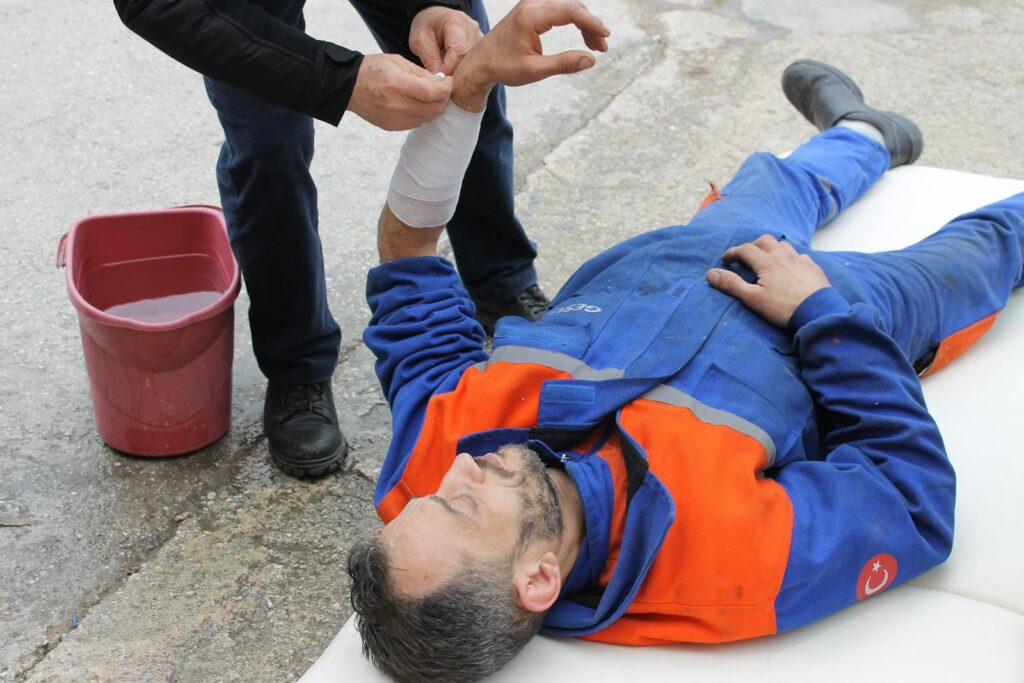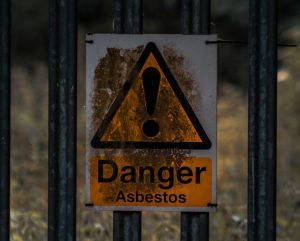Common Workplace Accidents: What UK Workers Need to Know

The Health and Safety Executive (HSE) reports that 1.7 million workers suffered from work-related ill health in 2024, with injuries significantly impacting UK workplaces. Understanding common accidents helps workers identify risks and maintain safer working environments.
Factory Floor Incidents
Manufacturing injuries often result from employer negligence regarding machinery safety protocols. Recent HSE investigations documented cases of workers losing fingers in unguarded machinery and suffering eyesight damage from inadequate protective equipment. A 2023 HSE report identified that 12% of major factory injuries occurred due to insufficient machine guarding.
Documentation proves crucial when machinery accidents occur. Workers should record specific details: the date and time, the machinery involved, any missing guards or safety features, and witnesses present. Maintaining copies of training records, accident book entries, and medical reports strengthens potential claims.
Workers affected by factory accidents caused by employer negligence can get guidance on what to do with an accident at work claim to help protect their interests and secure proper support. Getting professional advice helps ensure proper documentation of machinery defects, maintenance lapses, or training gaps that contributed to injuries. Research indicates that thorough evidence collection within the first 48 hours significantly strengthens manufacturing accident claims.
Construction and Height Work
Falls account for the highest percentage of fatal injuries in construction work. Platform safety requires regular inspections and proper setup procedures.
HSE investigations show that inadequate safety measures and poor risk assessment contribute to most height-related accidents.
Ladder accidents often result from improper positioning or maintenance issues. Scaffolding presents additional risks, particularly during the assembly and dismantling phases. Safety equipment failures can occur when harnesses, anchor points, or other protective gear receive inadequate inspection or maintenance.
Manual Handling Injuries
Cases often involve employer negligence through inadequate training, insufficient risk assessments, or failure to provide proper lifting equipment.
Workers suffering manual handling injuries should document specific circumstances. Evidence requirements include: recording weights handled, frequency of lifting tasks, available equipment condition, and previous reports of problems. Medical records from occupational health assessments provide crucial support for claims.
Back injuries, particularly those resulting from repeated lifting without proper equipment, require detailed documentation. Physical therapy receipts, medication costs, and travel expenses for medical appointments all contribute to compensation calculations. NHS statistics show that 45% of manual handling injuries lead to long-term treatment needs.
Transport and Vehicle Incidents
Forklift accidents cause serious injuries in UK workplaces, particularly in warehouses and distribution centres. Investigations regularly identify inadequate training, poor maintenance, and unsafe operating procedures as primary causes. Workers have suffered crushing injuries, fractures, and severe trauma due to unstable loads and vehicle collisions.
Employees involved in transport accidents must document vehicle conditions and operational circumstances. Recording details about maintenance schedules, training certifications, and previous safety concerns helps establish responsibility. Warehouse staff should retain copies of forklift licenses, inspection reports, and any communications about vehicle safety issues.
Loading bay incidents often result from poor communication systems and inadequate safety protocols. Workers sustaining injuries during loading operations need evidence of working conditions, including lighting levels, marking visibility, and safety barrier status.
Next Steps by Injury Type
Impact Injuries
Workers suffering impact injuries require immediate medical assessment. Documentation starts at the accident scene – photographs of hazards, witness details, and accident book entries prove essential. Maintaining a daily record of symptoms helps medical professionals track recovery progress.
Workers should collect evidence of:
- First aid treatment received
- Hospital visit documentation
- Workplace accident reports
- Equipment or materials involved
- Personal protective equipment provided
Strain Injuries
Strain injuries need thorough medical documentation from initial symptoms onwards. Recording job tasks, equipment used, and working positions helps establish injury causes. Occupational health assessments provide valuable evidence for workplace-related strains.
Essential documentation includes:
- GP appointment records
- Physiotherapy treatment costs
- Prescription expenses
- Work adjustment requests
- Previous injury reports
Equipment-Related Injuries
Equipment injuries demand detailed evidence of machinery conditions and safety measures. Workers should document machine guards, emergency stops, and warning signs. Cases often reveal maintenance gaps or insufficient safety protocols contributing to accidents.
Key documentation requirements include:
- Equipment training records
- Maintenance schedules
- Safety inspection reports
- Risk assessment documents
- Previous fault reports
- Repair request records
- Photographs of faulty equipment
Workers suffering equipment-related injuries should record specific details about their work patterns, including shift lengths and break frequencies. Evidence of overtime requirements or pressure to operate machinery quickly strengthens claims where these factors contributed to accidents.
Taking Action After Workplace Accidents
Securing proper support after workplace injuries requires prompt action. Medical assessments provide crucial baseline evidence for injury severity and expected recovery time. Workers should maintain detailed records of all injury-related expenses, including private physiotherapy costs and travel to medical appointments.
Essential steps include:
- Reporting accidents promptly in workplace accident books
- Seeking immediate medical attention
- Recording witness contact details
- Photographing accident scenes where safe
- Keeping copies of all medical documentation
- Noting any safety equipment failures
- Recording all communication about the incident
Successful claims depend on establishing clear evidence of negligence and resulting harm. Workers should preserve any evidence showing inadequate training, faulty equipment, or unsafe working practices. Understanding these requirements helps protect rights and secure appropriate support for recovery.
Conclusion
Workplace injuries significantly affect UK workers’ lives, impacting their health, finances, and job security. Understanding proper documentation requirements helps protect workers’ interests when accidents occur through negligence.
Key actions for workers include maintaining detailed records of:
- Medical treatment and associated costs
- Equipment conditions and safety measures
- Training records and workplace procedures
- Witness statements and accident reports
- Financial losses from injury-related expenses
Workers who suffer injuries need proper support throughout their recovery process. Expert guidance helps ensure thorough evidence collection and appropriate compensation for medical expenses, lost earnings, and ongoing care needs. Following the documentation steps outlined above strengthens workers’ positions when seeking support after workplace accidents.
Effective evidence collection directly influences claim outcomes. Workers should prioritise gathering comprehensive documentation immediately after accidents occur while maintaining detailed records throughout their recovery journey. This approach ensures that workers receive appropriate support when workplace negligence causes injuries.



